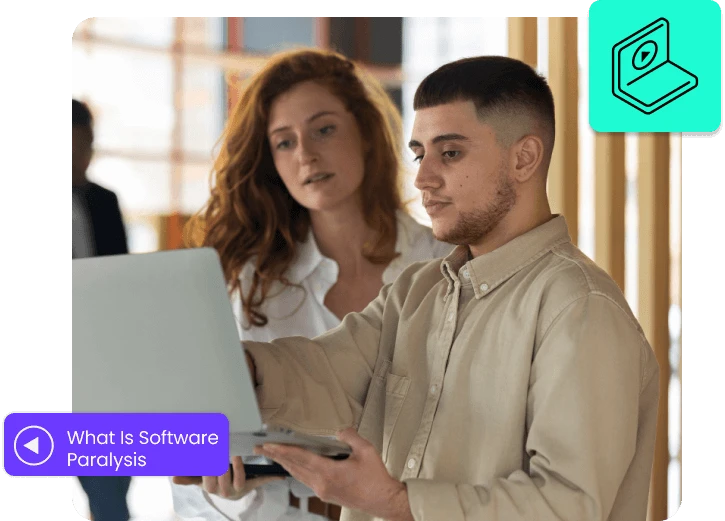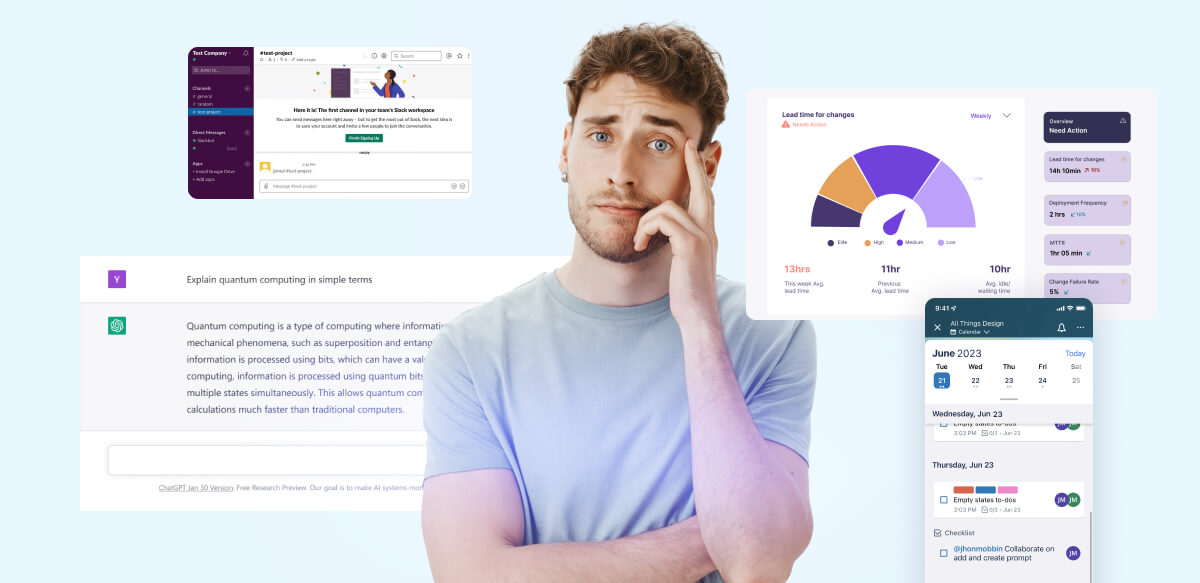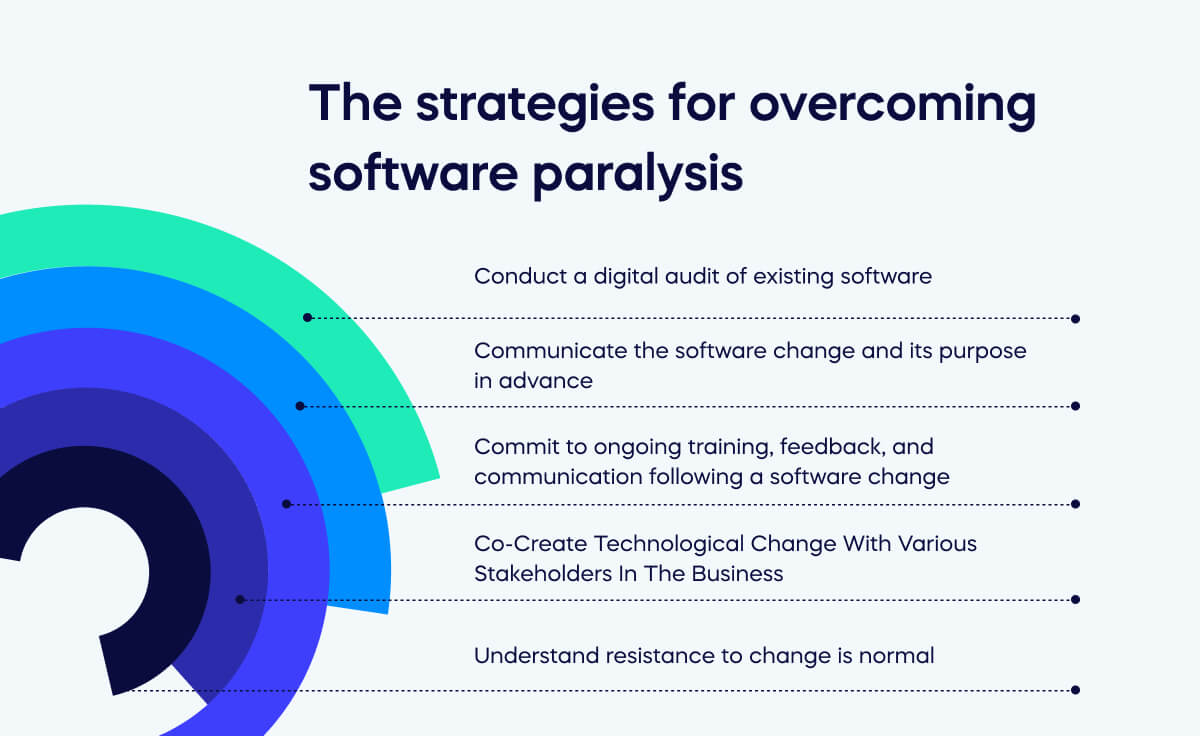What Is Software Paralysis
Software paralysis, also known as analysis paralysis, is a situation where individuals or teams become stuck in analyzing a problem and struggle to decide how to proceed.

Table of contents
This can lead to delays in project completion and reduced productivity. It is often caused by a fear of making mistakes or missing important details, coupled with a desire for perfection and completeness.
Overthinking a problem during the analysis phase can waste time and resources. To overcome software paralysis, it is essential to strike a balance between thorough analysis and taking action.

Recognizing Software Paralysis
Without a proper plan or adequate employee training, adopting new technology can cause employees to be stuck in a state of software paralysis.
The lack of guidance or support in relation to these new tools causes this overwhelming feeling. As a result, employees lose the motivation to use technology that is supposed to make their work life more manageable, thus reducing their productivity and efficiency in their workplace.
Before COVID-19, businesses were already saying goodbye to outdated, manual ways of doing things and quickly hopping on to new tech and apps. Then, the pandemic hit, and suddenly, going digital was no longer optional; it was a must for remote work and keeping things efficient.
Most of the technology was adopted to support regular business functions like finance, HR, and CRM, to name a few. Other types of technology were implemented to support the now-common remote work setups to amp up security and improve the overall employee experience. The idea was that all these apps would be game-changers for the business.
Why does software paralysis occur?
Software paralysis occurs when employees have to juggle and get used to loads of different tech without the necessary support, switching between them all day long, which, ironically, slows them down instead of speeding them up.
Software paralysis can also occur when employees feel like they’ve been thrown into the deep end with new processes and tech without proper onboarding, training, or resources to help them overcome the initial hurdles.
Plus, it doesn’t help when there’s no budget for dedicated IT support or handy tools like a digital adoption platform (DAP) to help smooth the transition.
What is the impact of software paralysis?
Excessive software changes can lead to employee anxiety and overwhelm without implementation guidance or support. Such changes trigger software paralysis, disrupting the established workflow and diminishing employee productivity if clear direction and training from management are lacking.
This software-induced stagnation can significantly dampen employee morale and effectiveness, potentially draining the organization’s output and productivity in the worst-case scenario. Furthermore, it fosters a reluctance among staff to embrace further software-related initiatives, leading them to disengage from successive proposals.
What are the strategies for overcoming software paralysis?

Conduct a digital audit of existing software
Before adopting new digital technology, audit the existing technology that employees must use to perform tasks. You should be performing this exercise on an annual basis, and it can answer questions like the below:
- Is it making life easier for our employees?
- Is it still bringing value to the table?
- Do we already have another tool that could do the job simpler?
If the answers to the first two questions in your digital audit are no, analyze new tools that could improve your employees’ work productivity and efficiency. This type of exercise can help you prevent software paralysis as the business gets into the habit of adopting technology that serves a purpose and will improve the lives of your employees.
Communicate the software change and its purpose in advance
Often, changes are part of a bigger picture and aim at broader organizational goals.
Typically, employees only hear about how the change directly impacts them, missing out on the story and its reasoning.
- Filling employees in on the larger context can help them understand and make sense of the change. It’s also a way of showing them they’re valued and keeping the communication channels open, which can help prevent software paralysis at a later stage.
- Clarifying the “why” or the big-picture goals when bringing in new technology is crucial. If employees see the bigger picture of how the tech benefits the company and believe it’ll make their tasks smoother, they’ll be on board more easily.
- Communicate changes promptly and transparently to all parties involved. This approach enhances the quality of information sharing and promotes a harmonious working environment.
- Give employees a heads-up about any upcoming changes so they can mentally prepare and know what’s around the corner. HR teams can lend a helping hand to leaders, crafting communications about significant organizational shifts.
It also allows employees to provide feedback on the proposed changes and tell upper management what they need to make the transition successful.
Utilizing this feedback could prevent software paralysis from taking place and ensure that any new technology is digitally adopted with ease.
Commit to ongoing training, feedback, and communication following a software change
When rolling out new software, whether a full-blown system or just a single gadget, ensure ample training to avoid software paralysis and help employees effectively get the hang of it and integrate it into their daily grind.
Don’t expect tech-savvy employees to instantly learn how to use these tools.
Along with clear and empathetic communication, you can also overcome software paralysis by making sure employees feel listened to. Set up a system for feedback to gauge how employees adjust to the changes.
This could be manager-led chat sessions for teams to share their thoughts and post a big change announcement, anonymous surveys to collect opinions, or both! Actively inquire about the kind of support for this change and resources they’d like from their leaders to ensure everyone’s on the same page.
Organizations should involve those who’ll feel the brunt of the changes at some stage in the decision-making and rollout.
Co-Create Technological Change With Various Stakeholders In The Business
Top-performing organizations should execute change by getting leadership and the staff at all other levels of the business to collaborate. This discussion can also include IT, customer service, and marketing employees.
By mixing up people with different views and involving them in the decision before implementing a change, you can get everyone on the same page for the change and prevent software paralysis.
Each team member could present a clearer picture of what those employees have to deal with regularly and can prevent the digital adoption of technology that will not add any value to their working day.
Understand resistance to change is normal
Resistance to change is a common reaction, largely stemming from the inevitable uncertainty it introduces. Employees might harbor concerns about being supplanted by new solutions. Therefore, organizations must provide training to assuage these concerns and retain workers who exhibit significant potential for growth.
How can DAPs prevent software paralysis?
A digital adoption platform (DAP) can help businesses avoid software paralysis.
This is because they offer employees the essential training and support for new software tools, enabling them to swiftly experience the advantages of cutting-edge technology in their daily responsibilities. Doing so mitigates the hurdles and disruptions that employees may encounter when adopting new software, ultimately ensuring successful digital transformations for companies.
You can tweak DAPs to meet your specific needs, meaning they can offer real-time, personalized guidance for every user.
Here’s how DAPs prevent software paralysis:
- DAPSs make it easier to get employees on board
- DAPs offer guidance and training within the app
- DAPs step in proactively tackling any user issues
- DAPs Lower pushback to new tech, upping user happiness and boosting morale
On a bigger scale, DAPs can offer value by letting leadership gauge how well software is utilized across the company. This knowledge can fine-tune the company’s tech stack by ditching overlapping functions and cutting down on those that do not bring real benefits and a good return on investment.
Addressing software paralysis requires a multifaceted change process involving regular audits, consistent, transparent communication, ongoing training, and inclusive decision-making. Implementing
Digital Adoption Platforms can significantly aid in this process, ensuring employees are well-equipped to utilize new technologies effectively and contributing to the overall success of a digital transformation in organizations.